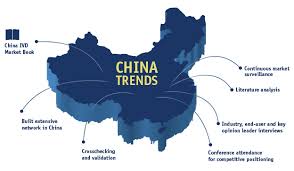In order to have full access of this Article, please email us on thedocumentco@hotmail.co.uk
Introduction
CHINA MARKET ANALYSIS, In this brief critical essay, the country/market analysis of China will be carried out. China has been selected as the case study because based upon the data provided by the World Bank, the forecasts made by the International Monetary Fund (IMF) and fundamental financial-market statistics as compiled by Bloomberg, China leads the race of emerging market economies in the world. The country is expected to achieve a GDP growth of 45.9% till 2017 and enjoys an inflation rate of 3%, while it has acquired a healthy reputation for an ease of doing business (Bloomberg 2013).
The essay encompasses discussion upon some key aspects, which include: the business environment; the impact of globalization and international trade patterns; the legal environment; the socio-cultural environment; an important ecological and environmental issues. Towards the end, some pertinent conclusions and related recommendations will also be presented.
 Local Business Environment
Local Business Environment
Industries and manufacturing sectors constitute the most important part of the Chinese economy. According to Anderlini (2014), in 2012 in terms of production, the industrial sector comprised of 45.3% of the country’s GDP (Figure – 1). The industrial sector in China is composed of several segments. These include: consumer goods i.e. electronics, toys and shoes; satellites along with commercial launching systems; telecommunications gadgetry; transportation i.e. aircraft, ships, locomotives, rail bogies and motor vehicles; food processing equipment; fertilizers; chemicals; cement; petroleum products; garments and textiles; weapons and ammunition; machine building; coal; alloys and aluminium; steel; iron; and mining and ore processing.
Figure – 1: China Industrial Production (Image Courtesy: Trading Economics 2014)
As far as the growth rate of industrial output is concerned, China enjoys being amongst the first thirty countries in the world with a growth rate of 7.9% (Economist 2014). Similarly, according to a 2011 estimate, the country’s investment towards industrial growth is about 46% of the total national production, which is substantial when compared internationally. Within the industrial sector, metallurgy and machine manufacturing have been the most significant segments and these two in combination constitute almost 20-30% of the total national industrial output. Similarly, alloys and aluminium and designing and production of the commercial space launch vehicles, are also gradually assuming prominence (Lemoine Et al. 2014).
On a separate note and with regards to the services sector, it is also enhancing with a share of 44.6% of the national GDP in 2012 (Moretti 2014).
China being an emergent market and economy enjoys certain opportunities and trends. These mainly include: preference of value over price; increase in size of the previously smaller families; an enhancement of general awareness about health and fitness; increasing use of information technology and social media; and also the broadening of customers’ choice.
With the rising consumer awareness, the Chinese customers are rapidly displaying a preference for value and quality against cost (Tang, Wang & Lu 2014). This is evident from the expansion of the Apple’s customer base in China despite the high prices of the company’s products (Lai 2014), against the previously preferred Chinese products of inferior quality.
The family size in China is also gradually increasing against the traditional one child policy. This change in the country’s demographics is likely to have a profound effect upon both the Chinese labour market and also the response of the business sector (Du & Yang 2014).
The Chinese public is also getting visibly aware of pollution and lack of drinkable water and their adverse effects upon their health. This concern has led to the growth of health related products like the anti-pollution masks and air filters and purifiers (Li, Liu & Li 2014). However, this awareness is also expected to have implications for international business desirous of investing in the country.
Like all other corners of the world, China is being equally affected by the growing public affinity for information technology and social media. At present the online retail transactions constitute only 1.6 per cent of the total national retail; however, this rate is expected to reach 40% over the next five years or so (Kwek, Wang & Weaver 2014). This trend not only indicates a growing popularity of e-commerce but can also mean that businesses desirous of investing in China will have to invest a major portion of their marketing budgets in this direction.
The overall enhancement in public awareness is also leading to the expansion of the consumer choice (Kwek, Wang & Weaver 2014). This can be interpreted as tougher competition and increased significance of value and quality.
China’s stock markets have recently become an apparently interesting opportunity for the western world. The appeal of this market lies in the country’s recently presented Shanghai-Hong Kong Stock Connect program, which has opened up the Chinese stock markets to a larger number of potential investors (Hasan, Song & Wachtel 2014). This when coupled with the recently applied reforms of currency, can be seen as a growing evidence of the country’s shift towards capitalism. However, despite its many attractions, investment in the Chinese stock markets is still a risky affair owing to: the absence of transparency and also of requisite legal cover (Wong & Zhou 2014); and a possibility of lack of influence against the Chinese partners (Huyghebaert, Quan & Sun 2014)…

Recent Comments